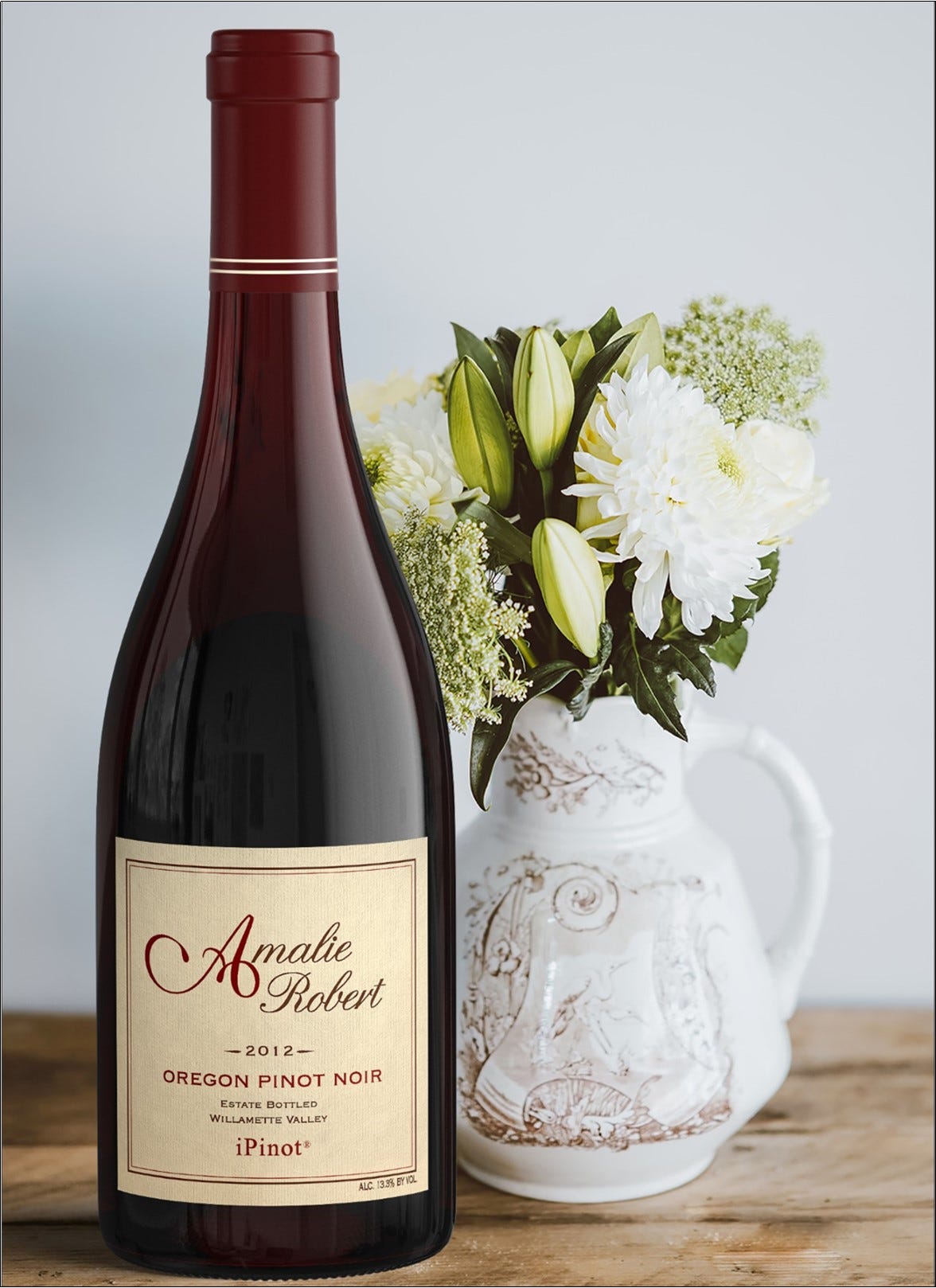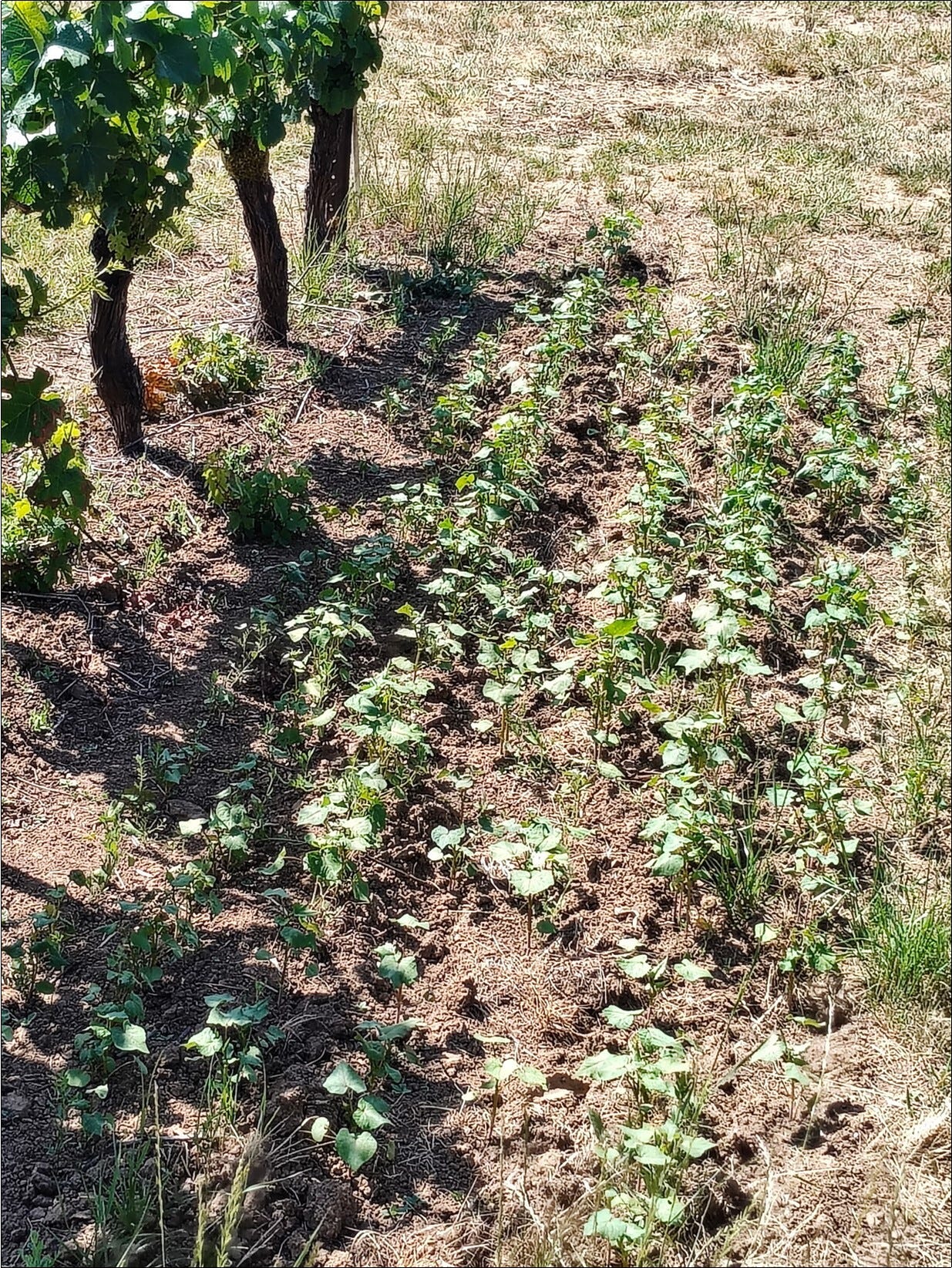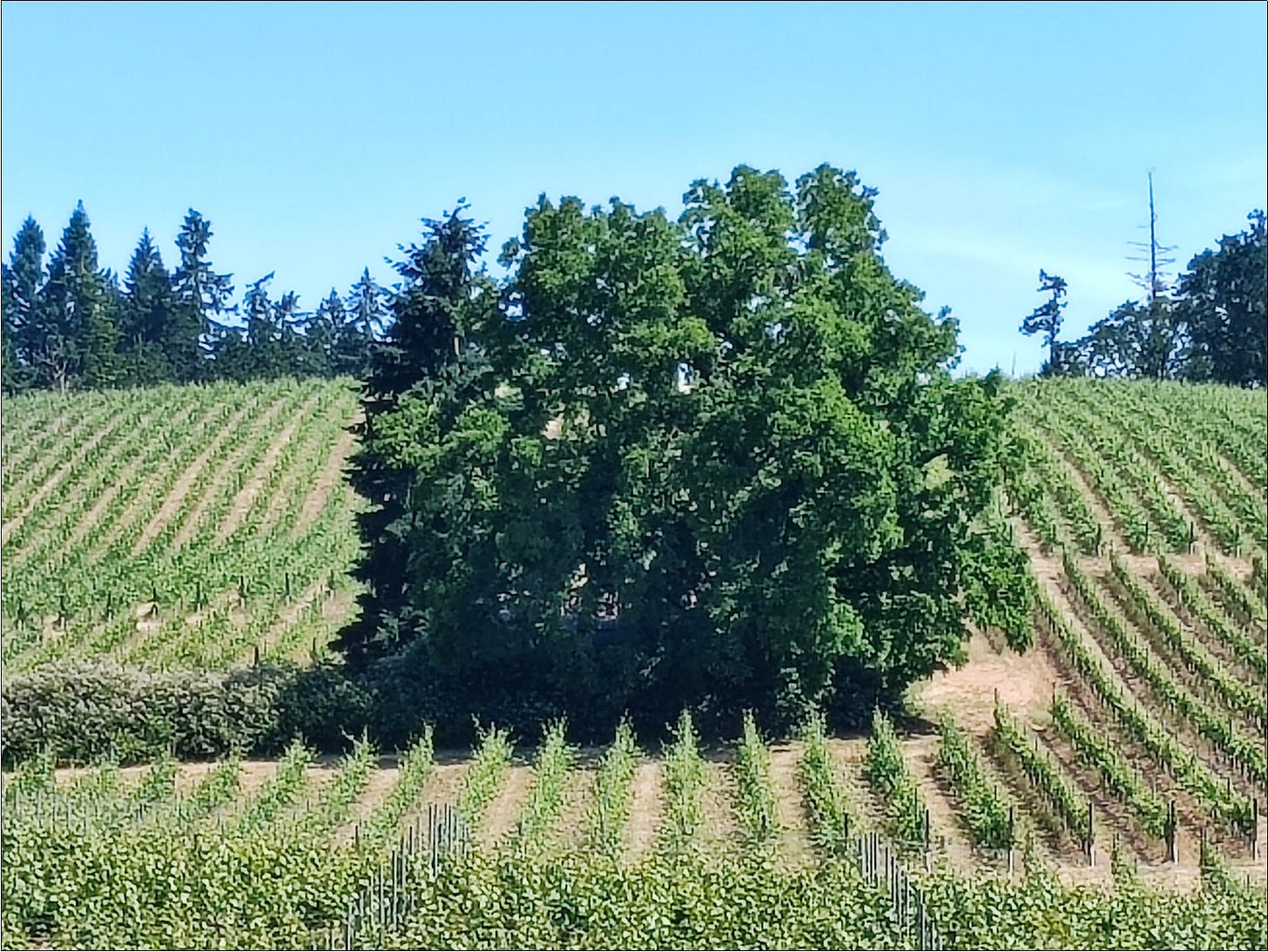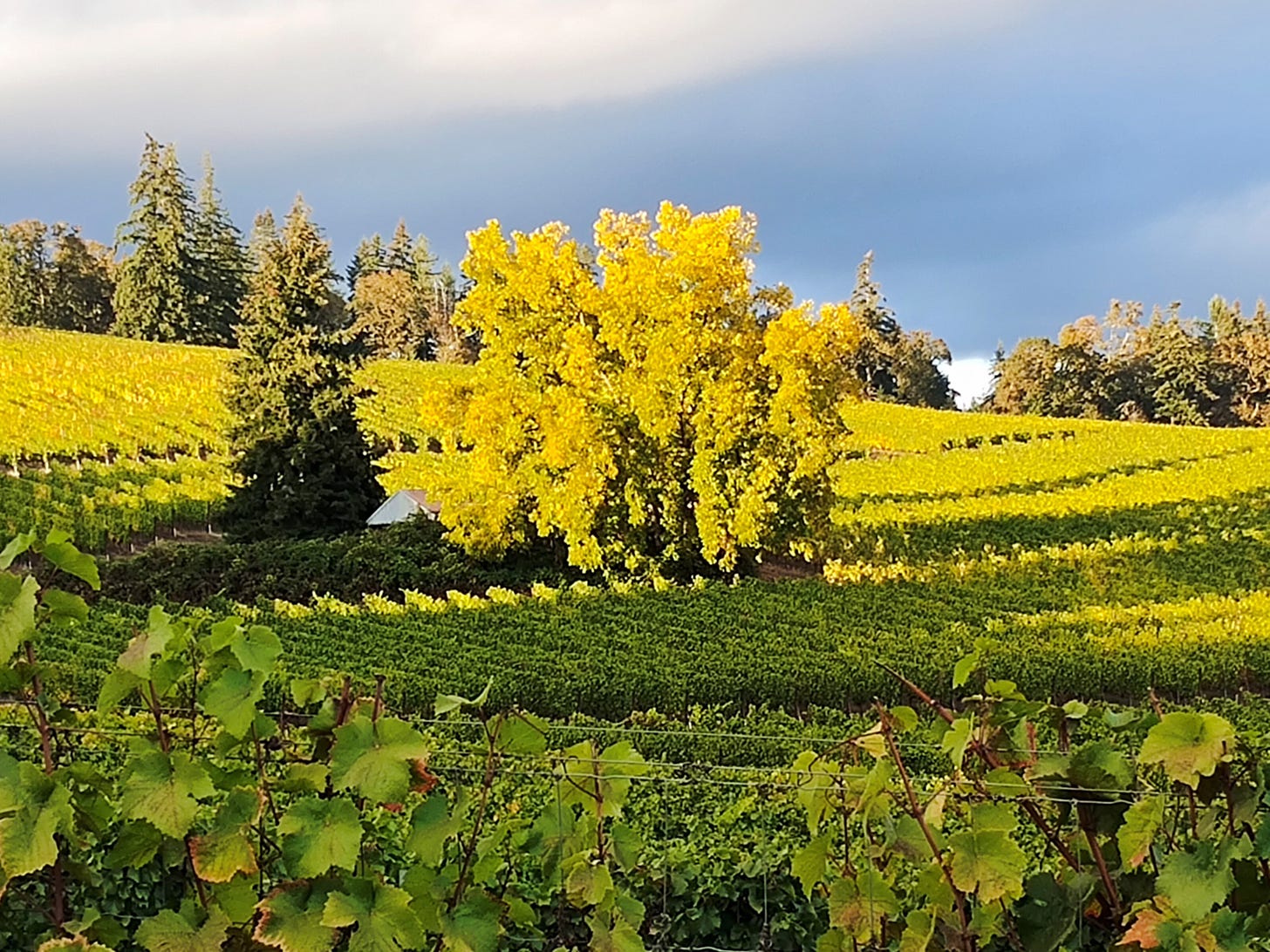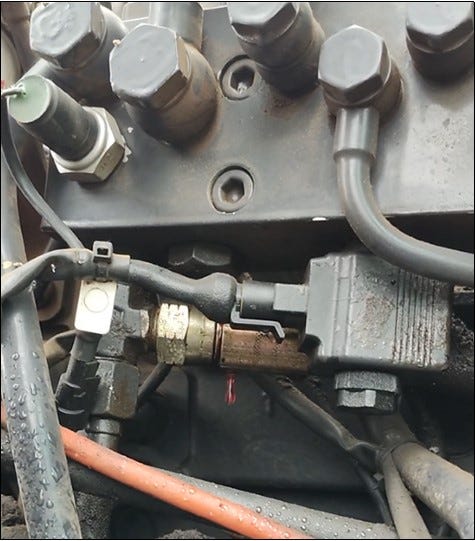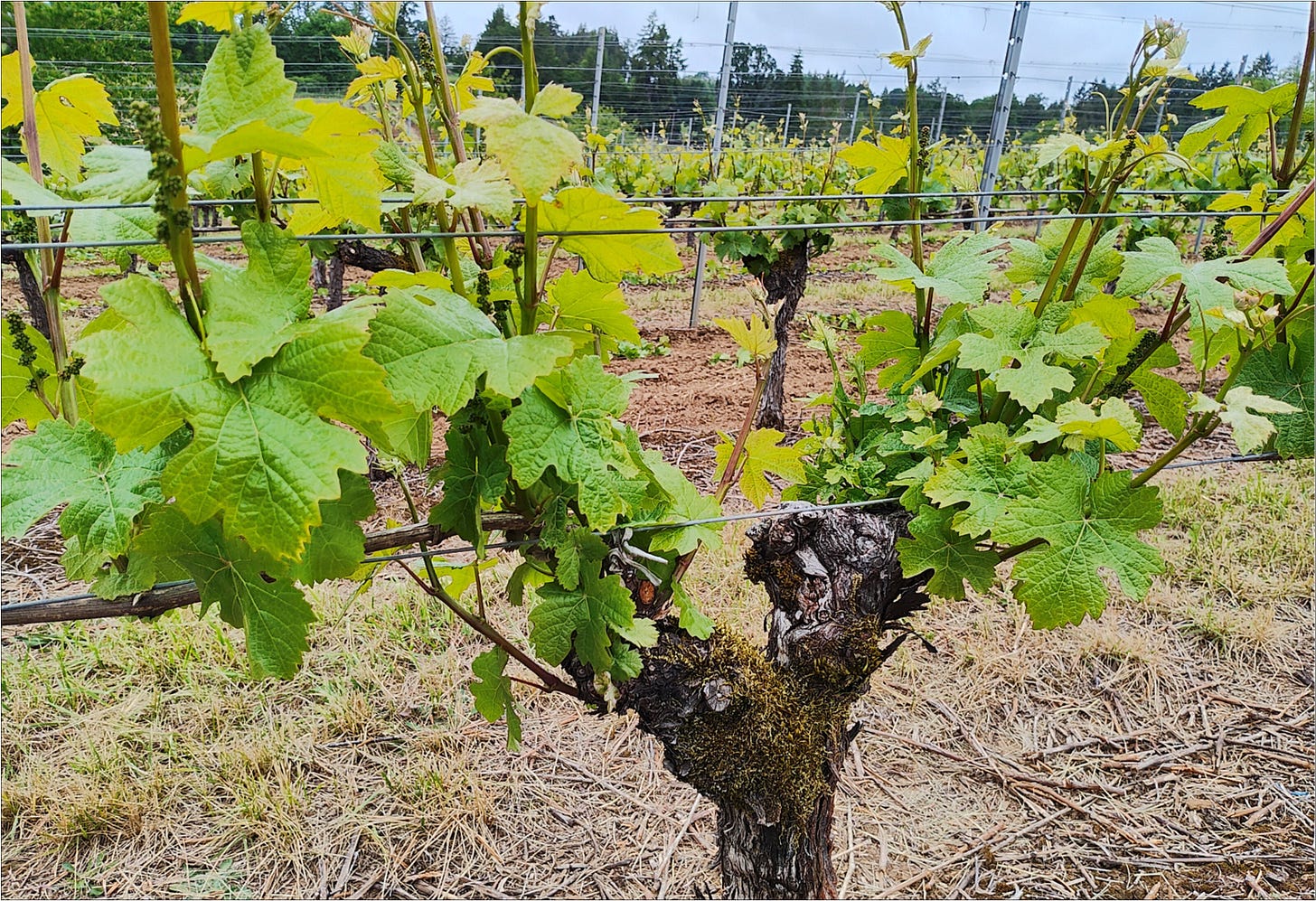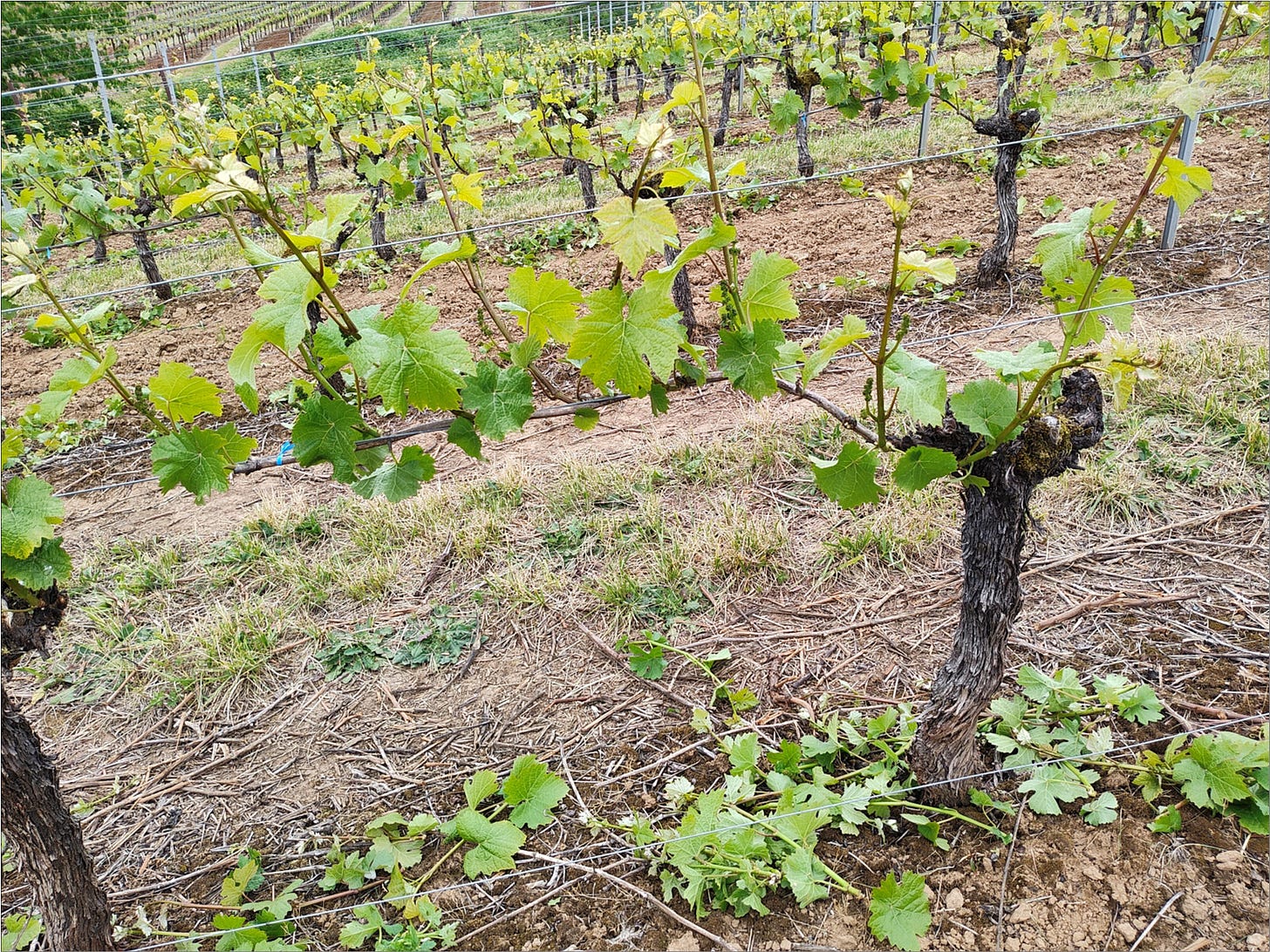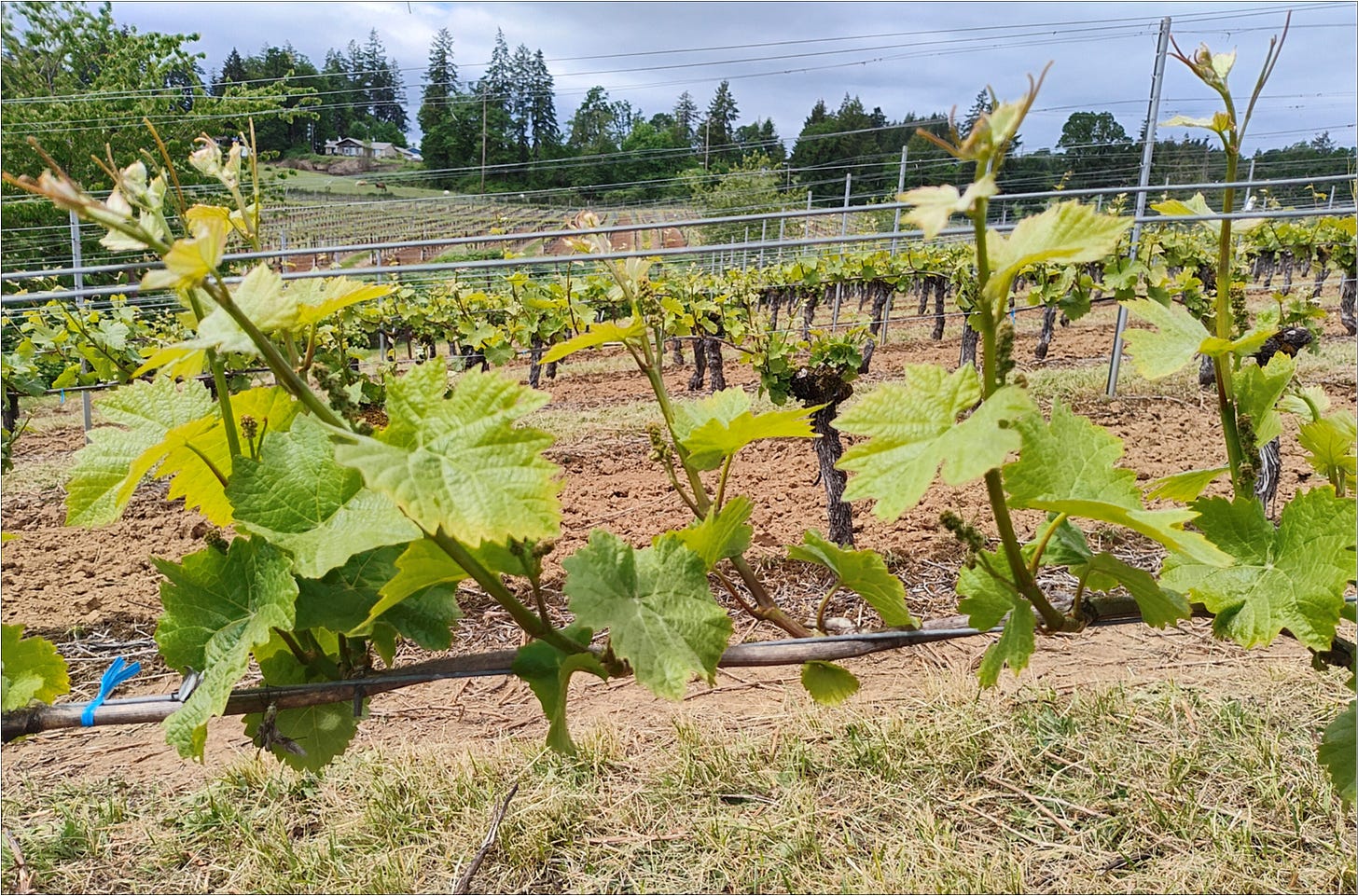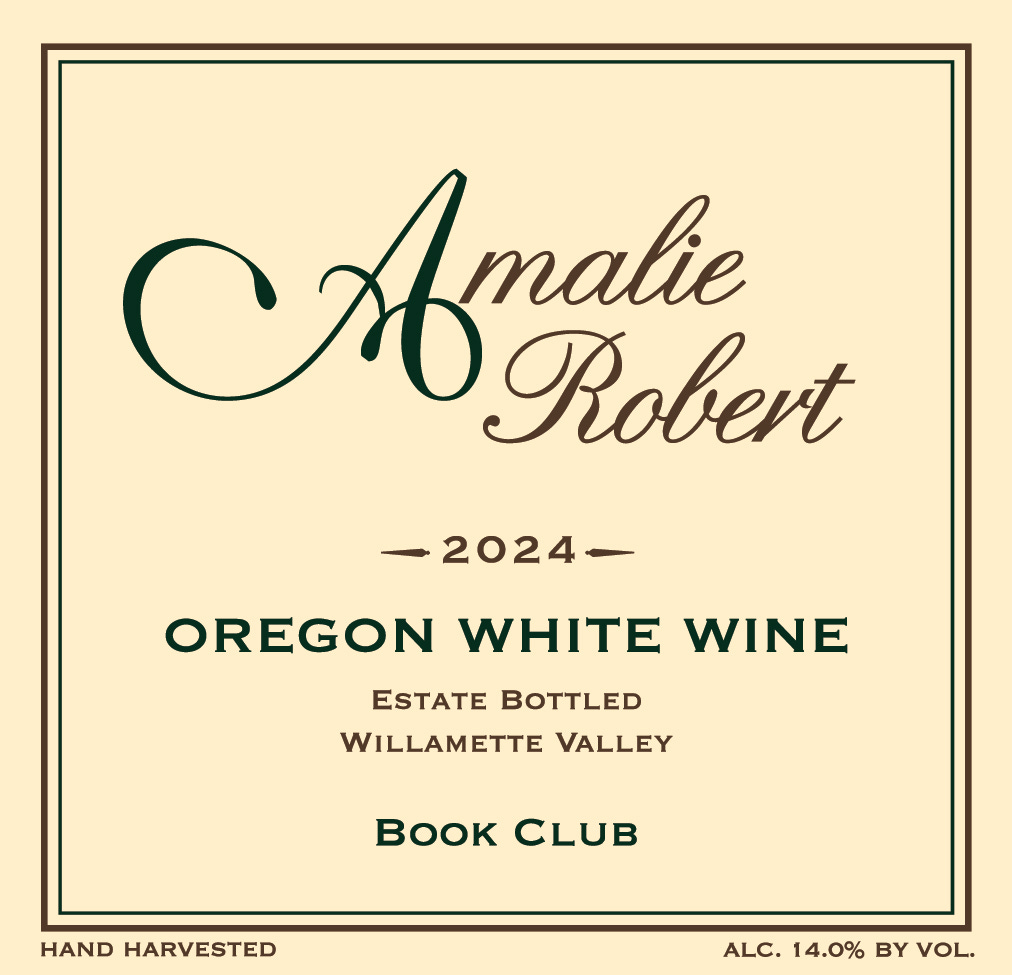Amalie Robert Estate Climate Update: May 2025
Hello and Welcome,
This is the May Climate Update and Photo Journal, Vintage 2025, from Amalie Robert Estate. Approximate reading time 1.05 ARB's (Adult Recreational Beverages); Pictures and video only 0.45 ARB's.
The vines are awake and getting the signal that it is their time to grow. Up until now, the roots have been branching out. But that’s kind of hard to show, so you’ll just have to trust us on that. The vines are, however, dependent upon heat units to grow. That is Mother Nature’s thing, and we are just along for the ride. The warmer it is, the faster they grow. They see the trellis wires and every year it is the same. They think they can outgrow the vineyard crew and escape the firm hand of control. We’ll just see about that…
And May was full of twists and turns. We dipped into the mid 30’s at night and soared into the 80’s during the day. Mix in some wind gusts and rain here and there and you have yourself a Willamette Valley winegrowing spring. Fortunately, we did not have any frost damage. We did lose a vine to tractor blight and Ernie is having it on with the guy in the mirror about that.
In This Communication:
The Big Picture
It Never Ends
The Main Story
What Does That Mean, and Why Should I Care?
Crushable Whites and Chillable Red
Traveling to the Willamette Valley?
Winemaking: The Continuation of Terroir by Other Means.®
Other Resources
iPinot® Pinot Noir 6-Pack Digital Offer
iPinot® Pinot Noir - a reserve level wine without the reserve level price. iPinot® Pinot Noir is created from reserve quality barrels of wine selected for our “Hers and His Reserves” - Amalie’s Cuvée and Estate Selection Pinot Noirs. Once the final “Hers and His Reserve” wines are blended, we have a few reserve level barrels of wine left to blend. We blend these cellar worthy barrels of wine together to create iPinot® Pinot Noir - a reserve level wine without the reserve level price.
Experience cellar worthy, Willamette Valley iPinot® Pinot Noir by Amalie Robert Estate. We are offering select vintages of iPinot® Pinot Noir for our 6-Pack Digital Offer!
The Big Picture
And here is where the magic starts. These little plants are buckwheat and common vetch. We grow these plants during the summer so that we can till them into the soil for the fall. These plants break down with the help of our soilborne fauna and provide nutrients for our vines. Remember your peas and carrots? Well, it’s just like that, but for vines.
And here is our majestic volunteer walnut tree. It too has awakened from its long winter slumber. A full canopy of green towers above the vineyard. A nice piece of eye candy for sure, but this tree also serves a very important function. As fall approaches, the leaves begin to senesce and turn a vibrant yellow. This is the signal we look for to open the harvest window at Amalie Robert Estate. This tree also affords our red-tailed hawks a strategic vineyard overlook.
It Never Ends
The Landini tractor Ernie uses to spray the vineyard required a major service this year. Without getting into too much detail, it was akin to quadruple bypass surgery. That sound you only think you hear, is Ernie putting the cuss into percussive maintenance.
It seems the hydraulic circuit that powers the steering system was leaking. Ernie knew this day would come as the tractor left small, and sometimes not so small signs. And of course, being a compact Italian tractor, the steering hydraulics were centered in the tractor. This means the steering hydraulic circuits were located just atop, and slightly forward, of the transmission. Unfortunately, access to this area requires dismounting the cab from the tractor.
Supercars such as the Ferraris and McLarens are built in layers. They start with the chassis, wheels and tires, then drop in the engine and transmission. Then they fit all the plumbing and wiring. Finally, the body is mated to the assembly and out it goes. Very fast we might add.
And when something goes awry, the repair process follows a reverse build protocol. Off with the body to get a better look. Then layers are removed until the offending part is discovered and then made accessible. The repair can then be effectuated. The removed layers are then put back into place, incurring some degree of normal wear and tear (which is not covered, by the way).
The Landini steering control valve utilizes 4 high pressure hydraulic hoses. One is high pressure in, one is high pressure out and then there are two hoses that actually control the front steering. Only two were leaking, but all four hoses were replaced. Hence the quadruple.
This is because the marginal cost of replacing the two non-leaking hoses was insignificant compared to having to come back next year and perform the same repair to replace them. As a capital expenditure, this repair bill will be amortized over a 5 year asset life. However, payment is due before the tractor is returned. Agricultural Warranty applies: 30 feet or 30 seconds, whichever comes first.
And what about the sprayer? Well, its Canadian, eh? and it has its own unique set of issues. Film at 11:00.
The Main Story
May is typically the month where we have enough growth on a vine to start shoot thinning. The objective here is to only allow the plant to grow a shoot from the fruiting cane every 4 inches, so that the clusters have enough room to fully develop. Right. What’s a shoot?
Ok, here is the deal. Vines grow along a horizontal wire 30 inches above the ground that we call the fruiting wire. We tie down a fruiting cane from last year along that wire. Along that cane are little buds. As the growing season develops these buds “break” and begin to grow new shoots. The shoots will grow up into the canopy and produce clusters of wine berries. We will then cluster pluck them, ferment the sugar out of them and bottle them as preserved wine berries, aka wine.
What we like to see are the shoots growing these clusters of wine berries to be spaced about 4 inches apart. Unfortunately, Mother Nature is not that into detail. Correcting this condition is our first major vineyard crew operation. The goal for our spacing is to have about 12 shoots evenly spaced along our 4-foot fruiting cane.
The vines, being vines, are more interested in growing as many shoots as they can. Their goal is to grow up some tree or other structure so that their wine berries will be in the sun. They do this so that the seeds within the wine berries will ripen, some animal will eat them, and then deposit them in some nearby locale. Not as much fun as drinking wine, but the vine has successfully reproduced, which is all they care about.
On a good day, this operation takes about 30 seconds per vine. To put that in perspective, we target about 7 minutes of hand labor per vine per year. The issue, of course, is that all the vines need the same task performed at the same time. So sometimes we are a little early and sometimes we are a little behind. And if the weather is uncharacteristically warm, "a little behind" can turn into "way behind" rather quickly.
What Does That Mean, and Why Should I Care?
Shoot spacing is important for the development of aroma, flavor and texture in our wines. Spacing our shoots apart allows room for each cluster to develop with adequate sunshine and airflow. Aroma and flavor develop in the skins. By having our cluster of wine berries separated, they are not shaded, or otherwise compromised by other clusters.
We are also trying to prevent mildew or other pathogens from compromising the integrity of our fruit. For you it may be some form of caffeine, but for the vines a little morning sunshine and a gentle breeze is what gets them going. This early morning routine helps to dry any overnight moisture that would enable rot to take a foothold. Clusters that are pressed together, do not dry and that can be the basis for an infection.
The Numbers
While it is too soon to tell, we seem to be off to a very good growing season. In other words, nothing has gone horribly wrong, yet. We seem to be marginally warmer for high temperatures, while evening temperatures remain consistent with historical averages. This is somewhat "normal" for the last few vintages. We will just have to wait and see what July and August bring to the party.
May, Vintage 2025 logged 267.8 Degree Days with a high temperature of 86.9 degrees Fahrenheit recorded on May 30th at 4:12 pm, and a low temperature of 34.0 recorded at 5:36 am on May 4th. The first 15 days of May recorded 114.6 Degree Days, and the second half of the month recorded 153.2 Degree Days. Total Degree Days for Vintage 2025 now stand at 431.2.
Rainfall for the month of May, Vintage 2025 totaled 0.48 inches. This brings the growing season total to date from April through May to 2.06 inches. While not much rain, it came at just the right time after Ernie drilled in the spring cover crop of buckwheat and common vetch. And now we wait for germination.
Crushable Whites and Chillable Red
We have officially passed the Summer Solstice, and that means the dog days of summer are upon us (some of you more than others). We see two Adult Recreational Beverage options: Dog nose beer (cold and wet), or crushable whites and chillable red. We can help you with the second option.
We have already crushed the white wines, that happened last fall. Now they are bottled and ready to be enjoyed! And what exactly is a chillable red? The short answer is Pinot Meunier. And that is because of the lighter body and insanely perfumed bouquet of this wine. A little chill on this bottle to around 60 degrees provides an exhilarating experience when paired with your favorite charcuterie board or other afternoon delight.
New Release on offer! Vintage 2024 was the vintage of the year, and here is your opportunity to try our new release Book Club White wine with our crushable whites (and rosé) and the most quintessential chillable red!
2024 Book Club White - Gewürztraminer and Viognier team up to produce tropical aromas over a scintillating palate.
2022 Dijon Clones Chardonnay - Meyer lemon zest aroma and a starfruit palate entertain while a crisp and delineated finish awaits.
2023 Book Club Rosé - This is your time to relax, recharge rinse and repeat! Enjoy this crisp rose with your unbridled imagination.
2023 Pinot Meunier - Raspberries over rose petals, the quintessential Pinot Meunier from Amalie Robert.
Click on the Big Blue Button to order your crushable whites and chillable red!
As we transition to a shipping credit option to replace flat rate shipping, the credit will be manually applied by Dena and confirmed with your order before shipping. Any order of 6 bottles or more will receive up to a $15 shipping credit. An order of 12 bottles or more will receive up to a $40 shipping credit.
All shipping options are available to you. You can apply your credit to ground shipping, or next day air. The credit also applies to Alaska and Hawaii shipments. Please email Dena for options.
As the weather warms up across the country, we may opt to use insulated shippers for 6-bottle and 12-bottle orders to protect your wines. We also suggest a UPS or FedEx drop point to a climate controlled facility to allow you to pick up your wine at your leisure.
Traveling to the Willamette Valley?
Planning to enjoy traveling and exploring the Willamette Valley? There are two primary gateways to the Willamette Valley. Most people are familiar with Portland International airport (PDX) at the top of the Willamette Valley. However, there is a second gateway in Eugene (EUG) at the south end of the Willamette Valley. Both of these airports service the major carriers.
Insider Tip: Alaska Airlines offers a Wine Flies Free program from both PDX and EUG. You will need to acquire a wine shipper box as you tour the valley. When you check in for your flight, indicate you have a case of wine, and it will be checked for FREE on Alaska Airlines. BONUS: Many wineries will provide you a FREE wine shipper box with a 6 bottle purchase.
Interested in learning about the newest AVA? Download our FREE guide to the Willamette Valley AVA’s!
Amalie Robert Estate is open year round by appointment for vineyard tours and tastings. Request a tasting appointment with your preferred day and time.
Winemaking: The Continuation of Terroir by Other Means.®
We are living the dream so you don’t have to. Winemaking: The Continuation of Terroir by Other Means.® is a repository of our farming history at Amalie Robert Estate.
We have over 200 posts going back some 25 years. It’s all out there on Substack. You can visit the archive for FREE! If you want to see what we see on a more regular basis, follow us on Instagram @AmalieRobert.
Kindest Regards,
Dena & Ernie
Other Resources
Visit our Website
Visit the FLOG Archive
Take the Amalie Robert Tour
Shop Amalie Robert Direct
Download your FREE Willamette Valley sub-AVA Guide
Alaska Airlines Wines Fly Free





